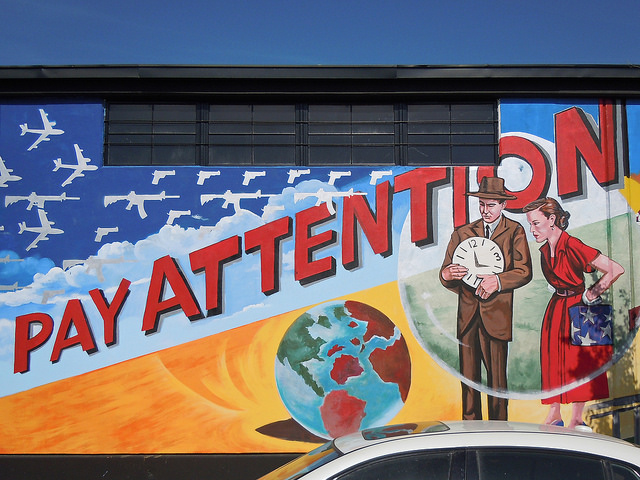Unlock the Magic in Your Story Now
Get the Free 20 questions to Ask Before Launching Your Idea workbook when you sign up for occasional updates.
Get the Free 20 questions to Ask Before Launching Your Idea workbook when you sign up for occasional updates.
Articles filed in: Marketing
Who Exactly Is It For?
 Alec has been on the road since 4 am. He’s picked up three fares all morning. The arrival of Uber has hit him and other Melbourne taxi drivers hard. According to Alec, the taxi industry has seen a 40% decline. He says he earned as much twenty years ago as he does today. He complains bitterly about the regulators and his bosses—now in his fifties, he reckons he’s too old to switch jobs.
Alec has been on the road since 4 am. He’s picked up three fares all morning. The arrival of Uber has hit him and other Melbourne taxi drivers hard. According to Alec, the taxi industry has seen a 40% decline. He says he earned as much twenty years ago as he does today. He complains bitterly about the regulators and his bosses—now in his fifties, he reckons he’s too old to switch jobs.
Joey hasn’t been driving as long as Alec. But he understands why many riders prefer the convenience of Uber. He knew as soon as the ride-hailing app arrived in Australia there was no way he could compete on speed or price. So he made a conscious decision not to try being faster or cheaper than Uber, but to find and serve a group of riders he could delight instead. Joey operates a small airport transfer car service. He charges the same rate as a taxi but provides a more personal, upmarket service with the intention of attracting repeat business clients. Joey’s strategy is working. He doesn’t have to drive the city streets finding customers for his service because he’s intentionally designed a service for his customers.
The more deliberate and specific we are about who we want to serve, the better our products and services will be.
Image by Matthias Ripp
Becoming The Obvious Choice
 Today you will repeatedly engage in the process of persuasion. You will try to engage with someone in a way that convinces them to change their opinions, choices or actions—their mind or their behaviour. You will aim to persuade them that you or your product are the obvious choice.
Today you will repeatedly engage in the process of persuasion. You will try to engage with someone in a way that convinces them to change their opinions, choices or actions—their mind or their behaviour. You will aim to persuade them that you or your product are the obvious choice.
We tend to think that persuasion is simply about laying out well-reasoned arguments that help the best or most obvious choice bubble to the surface. But ‘best’ is subjective and variable because it’s dependent upon the circumstances surrounding the moment when people are invited to change or choose.
The work of psychologists like Robert Cialdini into the science of persuasion demonstrates that it’s not just what we say that counts, it’s also how and when we say it that matters. A hotel can get more guests to reuse towels by subtly changing the script on the sign in the bathroom. A waiter can increase his tips by offering mints along with the bill.
Becoming the obvious choice isn’t only about clearly laying out benefits to the prospective customer. It’s about understanding the context in which the decision is being made.
Eliciting a choice or change isn’t only or always about making it more obvious.
Image by bassnroll
Should You Simplify Your Sales Script?
filed in Marketing, Storytelling
 There’s a shop half-way down Smith Street that sells just about everything. Whatever you might need from a hammer to a cigarette lighter, a birthday card to an egg slicer they’ve got it. It’s the kind of shop that usually encourages browsing more than buying, where people wander around aimlessly ‘just looking’. But in this shop, an unusually high percentage of people are converted from browsers to buyers.
There’s a shop half-way down Smith Street that sells just about everything. Whatever you might need from a hammer to a cigarette lighter, a birthday card to an egg slicer they’ve got it. It’s the kind of shop that usually encourages browsing more than buying, where people wander around aimlessly ‘just looking’. But in this shop, an unusually high percentage of people are converted from browsers to buyers.
The shop owner stands behind the checkout at the entrance to the shop making a point of greeting every customer. This is nothing new. We see that happening every day in retailers around the world. What’s different in this situation is what happens next, partly by accident, rather than by design. Because English is her second language, the owner has to choose her words carefully so she can get a response that helps her to understand how to help prospective customers. The indirect approach typically used in other retail environments won’t work for her. She simplifies her script using a more direct approach, asking every person the same question as they enter the shop.
‘Are you looking for something?’
The question elicits a more useful response than the typical, ‘How can I help you?’ It focuses the customer on his original intention and enables the shop owner to help him navigate the Aladdin’s cave of products.
Good salespeople help customers to do the thing they wanted to do. Often in our desire to empower the customer to make the right choice we prevent them from choosing at all. In some situations, the direct approach is the right one.
Image by Brian Yap
The Downside Of Competing For Customers
 The boardroom was ready. We each had a bottle of French sparkling water, a notebook and pen next to our seat. Delicious herbal tea and snacks were served on our arrival. We were meeting to discuss how best to tell a story that resonated with the client’s customers before the launch of a new marketing campaign next season. The marketing team’s carefully prepared presentation was locked and loaded, and examples of their past promotions had been laid out down the middle of the long boardroom table, alongside those of their competitors.
The boardroom was ready. We each had a bottle of French sparkling water, a notebook and pen next to our seat. Delicious herbal tea and snacks were served on our arrival. We were meeting to discuss how best to tell a story that resonated with the client’s customers before the launch of a new marketing campaign next season. The marketing team’s carefully prepared presentation was locked and loaded, and examples of their past promotions had been laid out down the middle of the long boardroom table, alongside those of their competitors.
The team presented data about the previous campaign’s performance relative the competition. They knew exactly what their competitors’ strategy had been and how much revenue each company had generated. They compared the different strategies in great detail. They outlined the targets they wanted to hit. But not once throughout the entire presentation did they question what their customer wanted. The customer barely got a mention. This company is not alone in neglecting to make room for customers at the table.
In our race to compete for a slice of the market, we have become fearfully reactive to the marketplace, instead of being bravely responsive to the people we intended to serve. We may have forgotten our customers, but it’s not too late to fix this. We can’t begin to be something to our customers without first understanding who we are and who we intend to become.
Image by freeimage4life
The Empathy Profession
filed in Marketing, Storytelling, Strategy
 When I was growing up (and maybe when you were too), careers like medicine, nursing and teaching, were regarded as being part of the ’empathy profession’.
When I was growing up (and maybe when you were too), careers like medicine, nursing and teaching, were regarded as being part of the ’empathy profession’.
Today, every one of us, from accountants to designers, CEOs to Astronauts, are in the ’empathy profession’. No business or brand can thrive without understanding what it is their customer wants. No leader can create meaningful change without seeing the world through the eyes of her colleagues. No innovator can create relevant solutions unless he understands the challenge his invention helps someone to overcome.
It’s hard to empathise with someone unless you know their story. That’s why the software that gets used and the cafes that stay open were created by people who started with their customer’s story.
Whether you’re a designer at Google or a chocolate maker at Pana—it’s only possible to make things that people want by figuring out how those people want to feel in the presence of your product. You tell better stories by understanding the story the customer wants to tell herself. Caring is part of every job description now.
Download and use this Empathy Map PDF to help you get started.
Image by Hernán Piñera
The Hallmarks Of Good Marketing
filed in Marketing, Storytelling, Strategy
 A real estate agent can generate more interest in a property by listing it well below the expected selling price. Underquoting is sometimes used as a marketing tactic to create a heightened sense of urgency in prospective buyers who don’t want to miss out. When the property sells for 30% above the quoted price range, the agent can fool himself (and his vendors) into thinking that this was simply the result of a good marketing campaign. Disappointed buyers don’t see it that way.
A real estate agent can generate more interest in a property by listing it well below the expected selling price. Underquoting is sometimes used as a marketing tactic to create a heightened sense of urgency in prospective buyers who don’t want to miss out. When the property sells for 30% above the quoted price range, the agent can fool himself (and his vendors) into thinking that this was simply the result of a good marketing campaign. Disappointed buyers don’t see it that way.
Good marketing attempts to inform, not deceive. A good marketer sets out to help buyers, not to confuse them. Good marketers add value. They don’t just close the sale. Good marketing is not a short-term sales tactic, it’s part of a long-term business building strategy.
Our job is to leave people feeling better for having worked with us. Good marketing starts with the intention to do just that.
Image by Robert Bell
Marketing Forwards
filed in Marketing, Storytelling
 Lachie was a half-decent painter and decorator, but what he really had going for him was his youth and enthusiasm. He’d been in business long enough to reap some reward for his efforts, but not so long that he’d experienced the bust that inevitably followed the boom in Western Australia. Lachie had an easygoing nature. When other tradies ominously shook their heads and pursed their lips, Lachie just smiled and said nothing was a problem. It was no wonder that he’d talked himself into building a thriving business.
Lachie was a half-decent painter and decorator, but what he really had going for him was his youth and enthusiasm. He’d been in business long enough to reap some reward for his efforts, but not so long that he’d experienced the bust that inevitably followed the boom in Western Australia. Lachie had an easygoing nature. When other tradies ominously shook their heads and pursed their lips, Lachie just smiled and said nothing was a problem. It was no wonder that he’d talked himself into building a thriving business.
It wasn’t until Lachie started work painting our kitchen that I realised just how much he loved to talk. I quickly learned working from my home office was a bad idea if we wanted the job finished on time. Before the smartphone, Lachie had talkback radio for company while he worked, but the iPhone opened up a whole new world. Now he could simultaneously paint a ceiling and chat with a friend on his phone. I will never forget the morning when he spent an entire hour telling a friend about the new accounting software he was using. He waxed lyrical about how much time it saved him on invoicing. But not only that, he’d increased his customer conversion rate by using this new software for quoting. He was getting better at following up on overdue accounts, and his cashflow had improved as a result. Lachie had become a walking, talking advert for Xero overnight. He even made sure his friend noted the correct spelling. ‘Zero with an ‘x’, not a ‘z’.
As marketers, we spend a lot of time on the story we tell. We obsess about what we can say to convince more people to buy our products and services, often forgetting that the best marketing is about giving the customer a story to tell. Your marketing doesn’t happen once the product is ready to stack on the shelf. It can start by being clear about the story you want a prospective customer to tell and then working backwards to create that result.
What will your future customer tell his friend about how your product or service changed his life or worldview tomorrow? Design for that today.
Image by David Meurin
The Difference Between A Weak Brand And A Strong Brand
filed in Marketing, Storytelling, Strategy
 The biggest mistake a brand can make is to try being all things to everyone. Weak brands settle for doing what’s easy or obvious. They appeal to the market of everyone, avoid the edges and thus become interchangeable with their competitors.
The biggest mistake a brand can make is to try being all things to everyone. Weak brands settle for doing what’s easy or obvious. They appeal to the market of everyone, avoid the edges and thus become interchangeable with their competitors.
Strong brands know they are this and not that. They intentionally aspire to be something to someone and so become irreplaceable to their customers.
Who’s your someone? What do you want to be to them?
Image by Nathan Makan
Squaring The Marketing Circle
 The ‘60% OFF’ signs had attracted shoppers to the empty stall. Sales assistants tried to turn browsers into buyers by offering to help. One prospective customer asked if they had any circular rugs in the sale. The assistant showed her a square rug instead. “These are only $100,” she said.
The ‘60% OFF’ signs had attracted shoppers to the empty stall. Sales assistants tried to turn browsers into buyers by offering to help. One prospective customer asked if they had any circular rugs in the sale. The assistant showed her a square rug instead. “These are only $100,” she said.
In the past, we’ve relied on the notion that marketing and sales are about making people want something. In a digital world of infinite choices, we’re coming to realise that it’s easier to make something people want.
A sale happens in two stages. Stage one is a deep understanding of the customer we want to serve. Stage two is the act of engaging with that customer.
Successful marketers do both.
Image by eatswords
What The Best Marketers Do
 I’m not sure when our attitude to marketing shifted. But it’s likely that it coincided with our ability to buy attention. The price of reaching more eyes and ears on flyers and billboards, radio and TV, seemed cheap compared to the effort of earning customer loyalty day after day.
I’m not sure when our attitude to marketing shifted. But it’s likely that it coincided with our ability to buy attention. The price of reaching more eyes and ears on flyers and billboards, radio and TV, seemed cheap compared to the effort of earning customer loyalty day after day.
The great marketers of two generations ago knew a reputation could not be easily bought—but it could be quickly destroyed. They didn’t try to be seen. They devoted the majority of their time helping their customers to feel seen.
That’s what the best marketers still do. They don’t shout, ‘look at me’. They whisper, ‘I see you’.
Image by Jeff Stvan